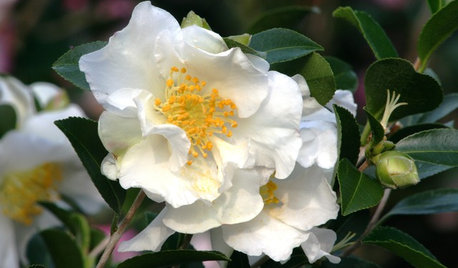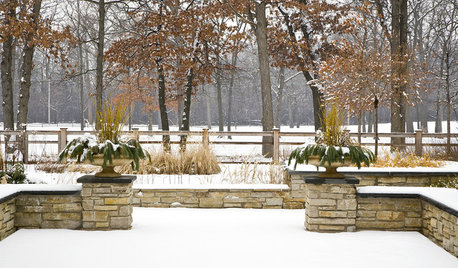Peach Diseases, preventing
len1
14 years ago
Related Stories

GARDENING GUIDESTree Care: Common Tree Diseases and What to Do About Them
Learn to recognize trees that may be affected by diseases or pests so you can quickly take action
Full Story
EDIBLE GARDENSHow to Grow Your Own Peaches and Nectarines
Make gardening a little sweeter with these juicy fruits, which you can eat after plucking or preserve for later
Full Story
EDIBLE GARDENSGrow Plum Hybrids for Your Favorite Fruit Flavors
Plums are cozying up with apricots, peaches and even cherries — here’s how to grow these hybrids for the best aspects of each
Full Story
FLOWERSGreat Design Plant: Sasanqua Camellia
Pretty fall flowers belie this plant's hardworking nature and relative tough attitude toward disease
Full Story
MONTHLY HOME CHECKLISTSYour Fall Home Maintenance Checklist
Prep your house and yard for cold weather with this list of things to do in an hour or over a weekend
Full Story
MOST POPULARHow to Get Rid of Those Pesky Summer Fruit Flies
Learn what fruit flies are, how to prevent them and how to get rid of them in your home
Full Story
FALL GARDENINGMake This Fall’s Garden the Best Ever
Learn the most important tip for preventing buyer’s remorse, plus get more valuable buying and planting advice
Full Story
GARDENING GUIDESPacific Northwest Gardener: What to Do in June
Now's the time to prune pines and vines, prevent pests and buy June-blooming plants to keep your garden healthy and beautiful
Full Story
CONTAINER GARDENS5 Important Winter Tasks to Keep Container Gardens in Shape
Prevent cracked pots, blight spread and withered plants come spring by focusing on this essential maintenance now
Full Story
KITCHEN DESIGN10 Ways to Design a Kitchen for Aging in Place
Design choices that prevent stooping, reaching and falling help keep the space safe and accessible as you get older
Full Story






olpea
Scott F Smith
Related Professionals
Simpsonville Landscape Architects & Landscape Designers · Accokeek Landscape Architects & Landscape Designers · Horsham Landscape Architects & Landscape Designers · Manhattan Beach Landscape Architects & Landscape Designers · River Forest Landscape Architects & Landscape Designers · Willowick Landscape Architects & Landscape Designers · East Patchogue Landscape Architects & Landscape Designers · Billerica Landscape Contractors · Wilmington Landscape Contractors · Aloha Landscape Contractors · Bridgeview Landscape Contractors · Holtsville Landscape Contractors · Kaysville Landscape Contractors · McLean Landscape Contractors · Thonotosassa Landscape Contractorsalan haigh
rstone
jellyman
rstone
rstone
Michael
rstone
amir2009
len1Original Author
Michael
marknmt
olpea
bart1
olpea
alan haigh
bart1
alan haigh
len1Original Author
ejp3
olpea
len1Original Author
john_in_sc
len1Original Author
john_in_sc
MrClint
alan haigh
olpea
MrClint
alan haigh
olpea
alan haigh
len1Original Author
keepitlow
eskota
eskota
eskota
len1Original Author
olpea
len1Original Author
len1Original Author
Scott F Smith
alan haigh
len1Original Author
olpea
Scott F Smith
jethro75
alan haigh
Gina Hawthorne